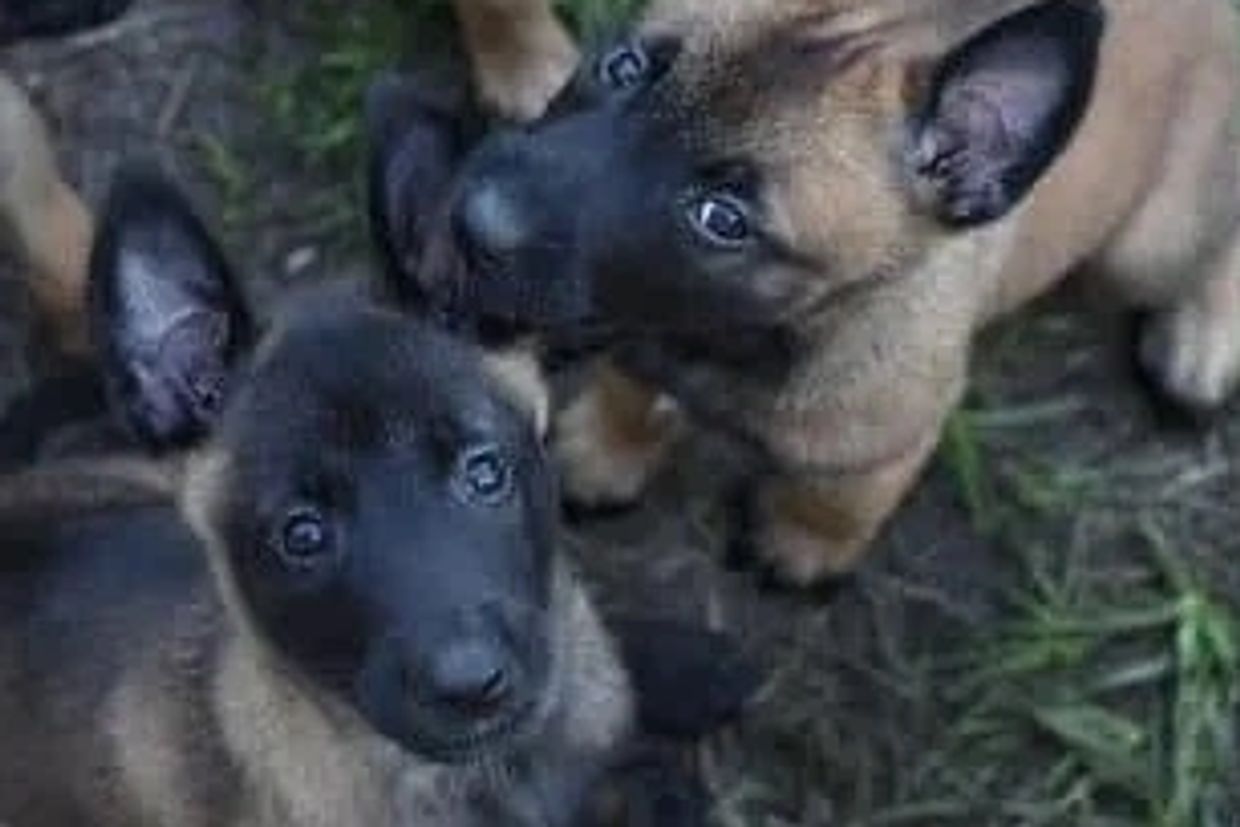A Brief History of the Dog
Dogs descend from an Ancient Wolf and share most of their genetic make-up with a cousin, the Grey Wolf. Over the course of thousands of years, human selection and breeding has transformed the wolf into a dog, and the dog into an amazing array sizes, shapes, coat colors, coat and ear types--creating everything from a tiny short-haired blonde teacup Chihuahua to a tall wire-haired Irish Wolfhound.
It seems reasonable to assume that the first dog to share a cave with humans was practically indistinguishable from a wolf. As to exactly how, or exactly when, a cooperation between canids and hominids began--and like so much else regarding the dog--we can only speculate. As to when wolves became dogs, again, we don't know. Current archaeological evidence and DNA analysis of a dog found buried with humans dates the emergence of the Canis lupus familiaris to around 14,000 years ago. However, cooperation between wolf-like dogs and humans may have begun as long ago as 34,000 years--according to some canine geneticists.
In any event, it makes sense that the two species formed a cooperative bond at some point. Both are members of extended families (packs), and exist within certain social orders or hierarchies. Both are hunters--who hunt by day. Both have forward-facing eyes. Both have been known to shelter in caves. Both are omnivores--to varying degrees. Both share their kills and finds with members of the family or pack--who do not hunt, like nursing mothers and the young. Both establish territories and defend them. Humans no doubt benefited from the hunting and guarding skills of their lupine friends, and wolves no doubt benefitted from being fed and sheltered by their human friends.
When humans moved away from hunting and gathering as a means of survival--which meant a certain amount of travel--into a more stationary life--wherein they began sowing and harvesting crops and keeping livestock, the dog came along and continued to serve. Instead of chasing down game, he used his stalking skills to herd and defend the flocks of the human. In helping his master to oversee a farm, the dog, again, became an important partner. In addition to herding and defending fields and livestock, he could pull a cart on market day. He could protect his master's purse in town and also protect the master's wife and children at home. And, he could keep stored foodstuffs from being over-taken by vermin.
As humans moved from farmsteads into towns and cities, the dog, again, came along. But now, some became practically unrecognizable from their forebears--as they became "lap dogs" especially for the wealthy. Some, however, stayed on the farm to herd and guard livestock, while others entered many different occupations. With the ability to detect scent 250,000 to 300,000 times more accurately than a human's, dogs have found many jobs in the modern World as four-legged Detectives.
There are now myriad opportunities for humans to benefit from employing a dog in work, in sport, and for companionship and protection.

Belgian Malinois
History of the Breed
First recognized in Belgium during the late 19th century, the Belgian Malinois ("mal-in-wah") was one of four varieties of Belgium Shepherd Dog having a consistent anatomy and type but differing in hair texture, color and length. Professor Adolphe Reul, described a square, medium size dog with well-set triangular ears and dark-brown eyes. The first standard for the Belgian Shepherd Dog was adopted in 1892.
Malinois have long been acknowledged as a peerless livestock herder in their native land. They were first bred by serious dog people who were primarily concerned with producing dogs of sterling working character and who spurned passing fads and fancies of pet owners. This emphasis on performance made the Mal the go-to dog for Belgian sheepherders and cattlemen.
It was in 1911 that Malinois were first brought to America. They flourished here until the outbreak of World War II put an end to the importation of European breeding stock. The breed languished in the postwar years until the early 1960s, when the Malinois admirers began the process of replenishing its American population. Malinois are still prized as herders of all kinds of stock, but their versatility and high work-drive have opened careers in many other occupations and activities. They are highly sought after as police and military K-9s. They have served with such distinction that the Fayetteville, North Carolina memorial to military dogs features a life-size bronze statue of a Belgian Malinois.
The first mention of the Belgian Sheepdog breed was a small notice in the January 1908 AKC Gazette mentioning that five additional Belgian Sheepdogs had been added to the NYC police force to work with an American bred one. Interest in the breed increased again in 1963 with sufficient numbers having been registered with AKC for the breed to move to the working group and be eligible to compete for championships in 1965. Belgians were registered and shown as one breed in the United States until issues arose over color and inter-variety breeding. In 1959, the AKC gave each variety a separate breed status. In Europe and Canada they are still considered varieties of the Belgian Shepherd. In 1983, the Malinois was moved to the new Herding Group with other herding breeds. In June of 1995, the AKC lifted the three generation rule on imports for all breeds. While this has increased importations, it has also complicated the Belgian “separate breeds” dilemma.
Interested?
I am always happy to talk about the Belgian Malinois Breed, my Pack, Puppies, or to answer any questions you may have! Drop me an e-mail, or give me a call!
Earthaven Malinois
Copyright © 2024 Earthaven Malinois - All Rights Reserved.
Photos by Jamie B Culler & K L Black
This website uses cookies.
We use cookies to analyze website traffic and optimize your website experience. By accepting our use of cookies, your data will be aggregated with all other user data.